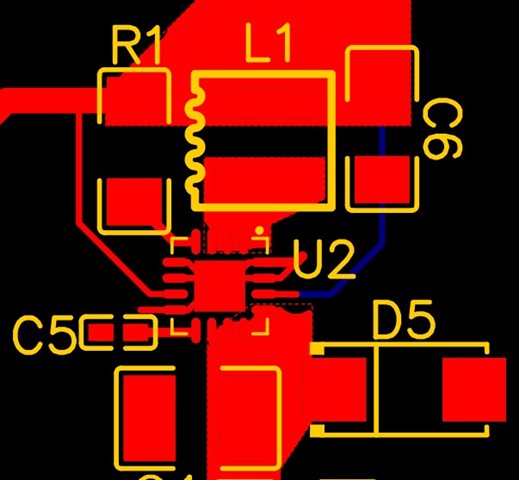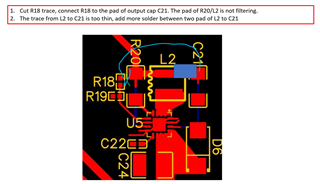Hi Team,
Good day. I am posting this inquiry on behalf of the customer.
"I encountered a problem with my 2.5V DC converter (see U5). The input is 5V with an output of 2.5V. Currently, the prototype is not output 2.5V but rather ~1.3V even though the auxiliary resistors and capacitors and layout are followed.
I have attached the PCB layout and the schematic of the U5 subcircuit. Red means the top layer while blue means the bottom layer.
I have also attached the PCB layout and schematic of my 3.3V DC converter (see U2) for your comparison. I included this comparison since the auxiliary components are similar and the PCB layout is similar. The good thing about U2 is that this converter works."
The ground areas of the PCB layout are hidden. The red copper traces that look like dead ends are actually connected to the bottom GND plane.




Please help to advise. Thank you for extending your support.
Kind regards,
Marvin





